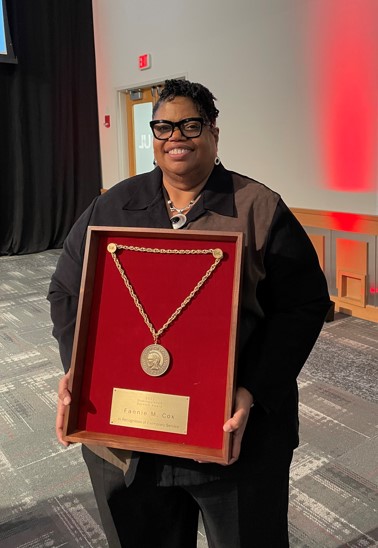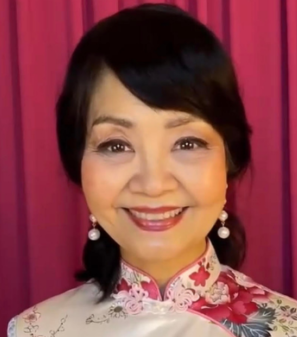“We Were Always Here”: Uncovering and Preserving the LGBTQ+ Experience through the Williams-Nichols Collection
Posted: April 16, 2024 Filed under: Archives & Special Collections, Art Library, Collections, donor, Ekstrom Library, Exhibits, Louisville History, People, University of Louisville Libraries 1 Comment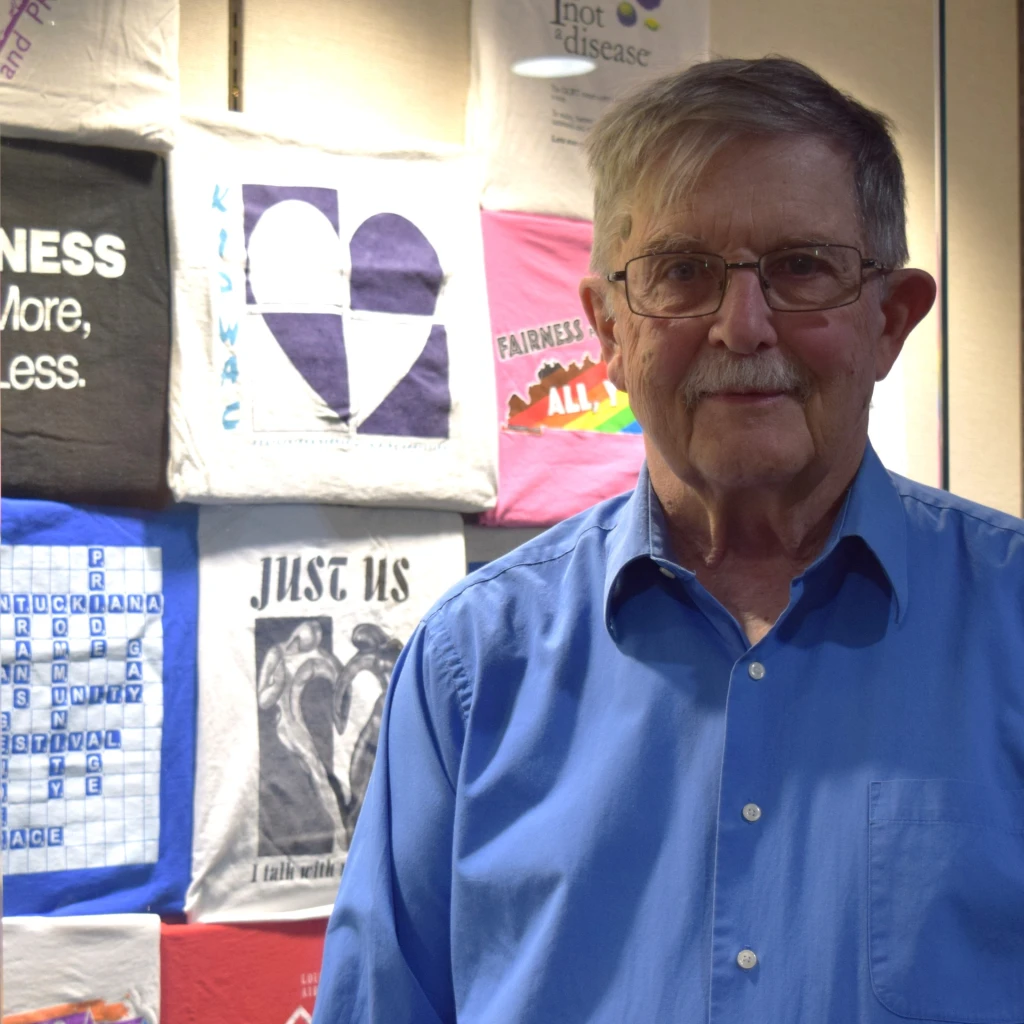
When it comes to collecting, David Williams knows a thing or two. The Louisville native and activist established the Williams-Nichols collection in University Libraries’ Archives and Special Collections in 1982. Since its founding, the collection has grown to hold thousands of books, video and audio recordings, memorabilia, and more that document the LGBTQ+ experience—especially in Louisville.
“We know very little about LGBTQ history in Louisville and most other places outside of San Francisco and New York,” Williams says. “It’s very important that people know there has always been this community here. It has been here since the founding of the city probably, but especially since 1970. We’ve collected stories and newspaper accounts of stuff before 1970, and we’re basically just scratching the surface. But we were always here, and this collection brings all that together.”
Williams traces his interest in history back to his childhood. Born in Louisville, Williams attended Catholic schools (St. Agnes, St. Xavier, Xavier University, and a year at Notre Dame), and his early life laid the foundation for his lifelong commitment to understanding and preserving the past. “My grandmother loved to collect just about everything. I remember going up to her house in Illinois and, in the basement, she had tables and tables full of newspapers and magazines stacked up high … There is a history of ‘packrat-ism’ in our family, so founding the archive was natural to me.”
It was in the 1980s that Williams found himself drawn into the gay rights movement in Louisville. Inspired by the need for community organization in the face of discrimination, Williams became involved in various LGBTQ+ groups where he witnessed first-hand the challenges and triumphs of the movement.
He cites 1981 as the beginning of his collecting LGBTQ+ artifacts. That is when the political climate around the rights of Louisville’s queer residents took center stage. Sam Dorr, a branch manager at a local bank in Louisville’s Highlands neighborhood, was involved with Dignity Integrity, a local social group for gay and lesbian Catholics and Episcopalians. When Dorr was elected president of the group, he informed his bosses at the bank that there was a possibility he would be on the news periodically to talk about gay rights. Although his bosses seemed okay with it at first, a week later they came back to Dorr with an ultimatum—to resign from Dignity Integrity or resign from the bank. When Dorr refused to do either, they fired him.
“It was his firing that prompted a lot of his friends in the community to start thinking about organizing,” Williams recalls. “By the spring of 1982, that’s what they did. They started a group called Gays and Lesbians United for Equality (GLUE). GLUE wanted somebody from Lambda Louisville, of which I was also a part, to come to their meetings once a month. Somehow I got volunteered.”
Among the various LGBTQ+ rights groups that were active in Louisville in the early 1980s, numerous newsletters, letters, posters, and other publications from the movement began to circulate. Williams realized someone should be saving the memorabilia. “I thought, somebody needs to be collecting this stuff or else it’s just going into the dump. It came natural to me, being a packrat.”
On November 17, 1982, Williams founded the Williams-Nichols Archive, named in honor of Williams and his former partner, Norman Lee Nichols. For the first four years, Williams focused his attention on gathering newsletters and flyers. After a breakup in 1986, he began collecting more earnestly. “That’s when it really took off and more people within the community started giving me stuff. I started boxing it and filing it, and it went from there.”
Since then—and thanks to Williams’ efforts and generosity—the collection has grown exponentially and is now one of the largest repositories of LGBTQ+ history in the nation. Among the many items, of course, Williams has a few favorites. “I’m always thrilled to find something new and interesting. Recently, a prized donor gave us some glasses from Gordon’s Golden Horse which was the first gay bar in Louisville in the 1950s. It was on the 600 block of 4th Street. I didn’t even know that these existed. It’s a real treasure.”
Another favorite item from the collection is Alicia Pedreira’s famous Isle of Lesbos shirt. “In 1998, Alicia and her girlfriend were coming back from an LGBT event on the Belvedere. Alicia was wearing this shirt that said, ‘Isle of Lesbos,’” Williams recalls. A passing photographer snapped a photo of the couple and wound up submitting it to the photographic exhibit at the Kentucky State Fair. When Pedreira’s place of employment learned of the photograph—and the shirt Pedreira was wearing—she was terminated.
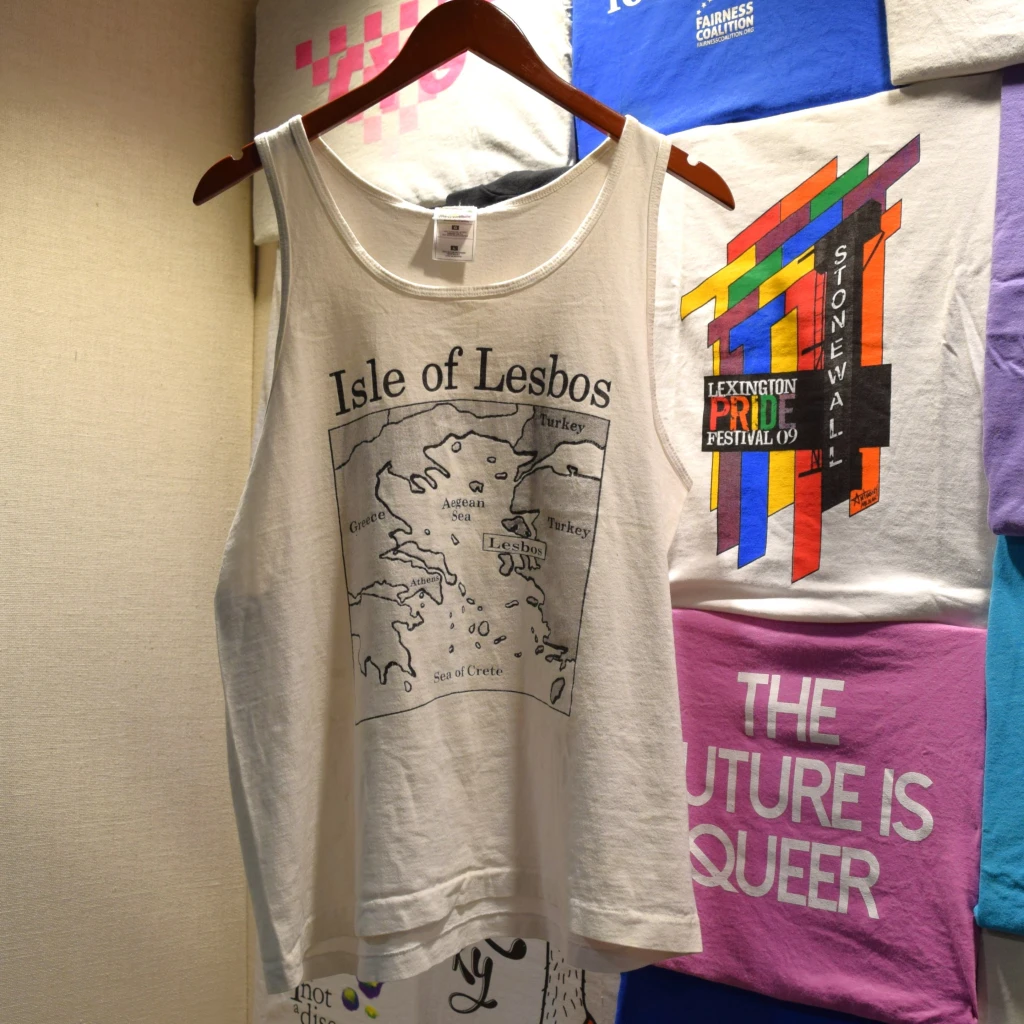
“This was the spark for the passage of the Fairness Ordinance. Before this, we had been trying to get it passed, and it failed over and over again. We had six solid votes, but we needed the seventh,” Williams says. “Steve Magre, an alderman for Germantown, heard her story and was very moved by it. He proved to be the seventh vote that we needed to get the Fairness Ordinance passed. So that t-shirt is our prized treasure in the collection.”
Williams’ personal favorite item is a book of poems written by his late lover, Norman Nichols. “[Norman] left a lot of memorabilia, including some of his t-shirts. He also left some poems which I put into a book and had published.” The book, Subway Stops, is a collection of poems Nichols wrote while living in San Francisco. “Some of the poems are pretty risqué, like something you’d see in a subway late at night.”
Although its focus is primarily Louisville and Southern Indiana, the Williams-Nichols collection boasts an eclectic mix of artifacts. In addition to ephemera from 20th-century Louisville, the collection has a first edition of Oscar Wilde’s The Picture of Dorian Gray along with a notecard handwritten by Wilde; a letter written by famous lesbian writer and expat, Gertrude Stein; and a series of gay magazines from across Asia and Europe.
Williams sees the Williams-Nichols collection as a crucial aspect of supporting research and education around LGBTQ+ history. “When I was growing up and I became aware of my gay inclinations, there was no place to go to learn what was going on with my body or if there were other people like me. I went down to the Louisville Free Public Library and fished around, but all I could find were these sociological tomes that were pretty condemnatory of homosexuality. There were no gay novels, no gay history, nothing like that.”
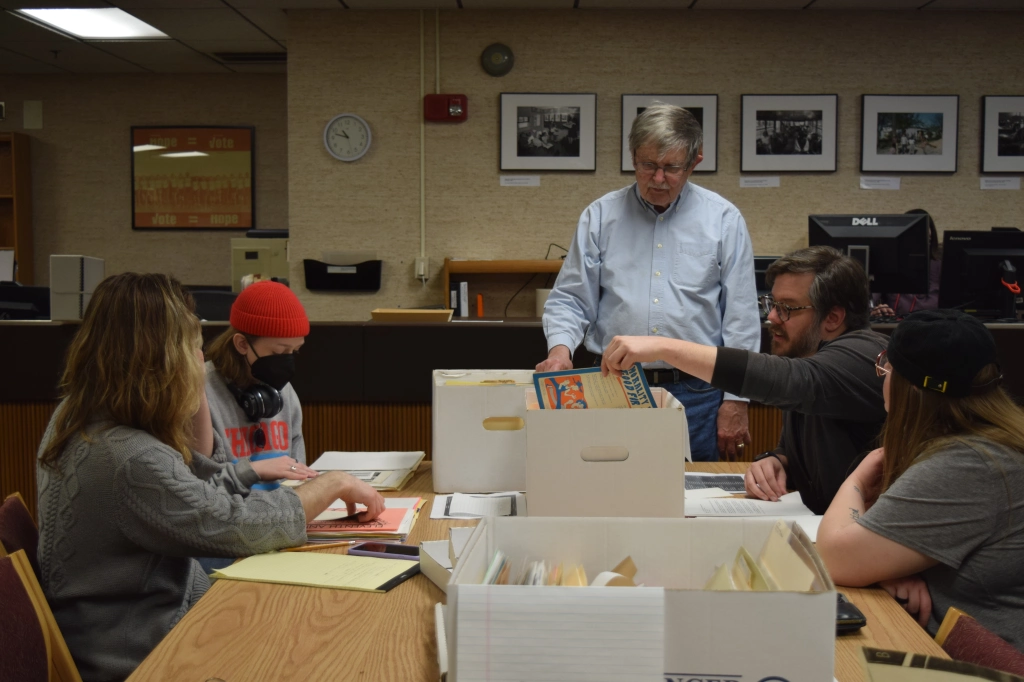
His recollections reinforce the importance of documenting and preserving LGBTQ+ history in Louisville. The Williams-Nichols collection supports representation of queer Louisvillians to prevent them from feeling alone like Williams did in his youth. “This collection helps to remind people that we are everywhere, as the slogan says. We are your neighbors, your sons and daughters, and TV personalities and radio personalities. This has been an eye-opener for people to realize that we’re in all aspects of life. The collecting is a thrill, but we want to leave a legacy, and we want to leave things for other people to discover in the future.”
One of the largest collections of LGBTQ+ artifacts in the United States, the Williams-Nichols collection is housed in Archives and Special Collections on the lower-level of Ekstrom Library. Items from the collection will be on display alongside Fairness Campaign records (also housed in ASC) as part of the upcoming exhibit, Fairness Does a City Good! A 25 Year Retrospective, which celebrates the fight for LGBTQ+ rights in Louisville. The opening reception for the exhibit is April 18, 2024, and it runs through December 2024.
Materials from the Williams-Nichols collection are also featured in the Bridwell Art Library’s current exhibit, Design Activism. Through the lens of the AIDS crisis, Design Activism explores how everything from hand-made signs to nationwide advertising campaigns can be used as tools for activism and education.
Please feel free to browse more of Archives and Special Collections’ LGBTQ+ Collections.
Beyond Aesthetics: ‘Design Activism’ and the Tranformative Power of Graphic Design
Posted: February 15, 2024 Filed under: Archives & Special Collections, Art Library, Collections, Exhibits, Louisville History, People, Primary Sources, University of Louisville Libraries Leave a commentBy Justin Davis
In today’s world, graphic design is more than just creating aesthetically pleasing visuals. It is a powerful tool that can be used to create awareness, educate people, and bring about social change. Design activism is the use of graphic design to make a difference, whether informing people about a social issue or rallying people behind a cause.
According to a 2022 Design Without Borders survey, “97% of freelancers believe creatives have the power to make a real social impact.” However, that number should be 100%. Design activism can make a real difference, especially for marginalized communities. From hand-written signs to nationally distributed educational campaigns, each work in this exhibition hopes to show the power that graphic design can have through the lens of LGBTQ+ rights.
A new exhibition entitled “Design Activism,” currently on display at Bridwell Art Library, has been curated from Archives & Special Collections through their Williams-Nichols collection by Vincent Young, a graduate student in Critical and Curatorial Studies and Bridwell Art Library employee. The Williams-Nichols collection holds 500 linear feet of Kentucky and Ohio River Valley LGBTQ+ history. It contains books, manuscripts, photographs, audiovisuals, and realia collected primarily by Louisville activist David Williams and his partner, Norman Nichols.
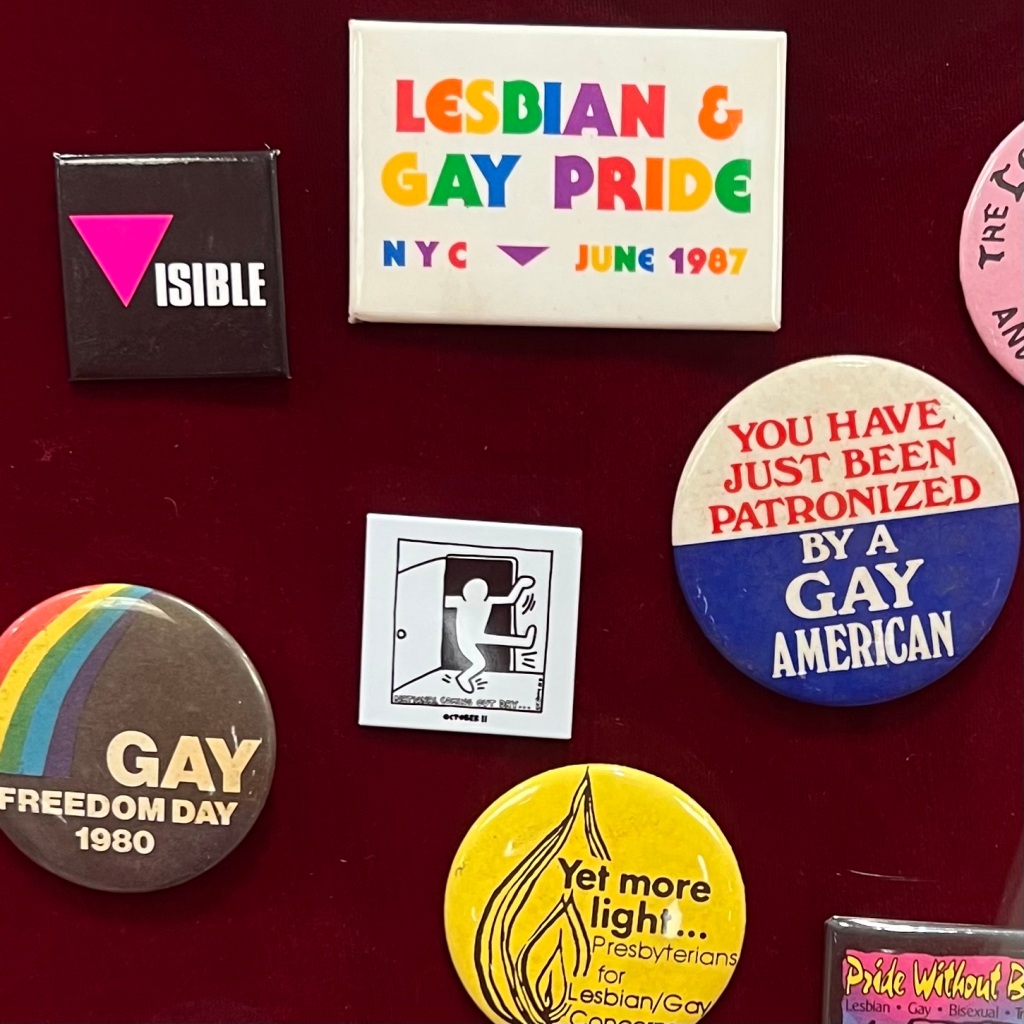
Recently, Williams visited the Art Library to see the exhibit which explores how graphic design was used during the AIDS crisis to educate people and create awareness. It is a powerful reminder of how graphic design can be used for activism and education. The work on display ranges from hand-written signs to nationwide advertising campaigns, all created to bring about social change.
“Design Activism” is about creating beautiful designs and designs that can make a difference. It is about using design to create awareness, educate people, and bring about social change. Whether you are a graphic designer, artist, or just someone who wants to make a difference, Design Activism is something we can all strive for.
“Design Activism” is currently on display at the Bridwell Art Library.
ART + FEMINISM Wikipedia Edit-a-Thon
Posted: March 22, 2023 Filed under: Art Library, Ekstrom Library, Events, University of Louisville Libraries | Tags: feminism, Wikipedia Leave a commentWikipedia has fewer and less extensive articles about women (cis and trans), non-binary people, Black, Indigenous, and other people of color. This lack of representation means that information on the world’s 10th most visited website is skewed. Real history documenting these segments of our population is not available.
That’s why we’re participating in the ART + FEMINISM Wikipedia Edit-a-Thon.
All are welcome to join us in creating new entries and enhancing existing entries focused on representing these under-represented groups and their contributions to the arts.
March 29, 2023
3:00 – 7:00 pm
Online (via Zoom) or
In-Person (Ekstrom Library Room W103)
Come be a part of the solution!
For more information and to register, visit https://library.louisville.edu/art/wikiedit.
Biennial Benchmark Survey helps University Libraries improve.
Posted: February 16, 2023 Filed under: Archives & Special Collections, Art Library, Ekstrom Library, Kornhauser Health Sciences Library, Law Library, Music Library, University Archives & Records Center, University of Louisville Libraries, User Experience | Tags: assessment, feedback, library assessment, surveys, User Experience Leave a commentBy Anita Hall, Assessment Librarian
The University Libraries Benchmark Survey, released in February, is one of the primary ways we obtain feedback from the UofL community. It covers all of our campus libraries, and has existed in some form since 2001.
We do our best to read every comment and make real improvements to the campus libraries each time this survey goes out. Sometimes the results show clear areas for improvement, such as the need for more electrical outlets, or for creating graduate study space, or for beefing up journals in certain subject areas. Often the Benchmark survey results are a starting point for more research. For example, if we see that something isn’t meeting people’s needs, we learn more about the specific issues and possible solutions and use the time between surveys to do that follow-up work. Either way, we’re committed to listening, learning, and evolving to better serve the University community.
Our most recent survey was conducted in April 2021, when we made a major update to the survey instrument. We work with UofL’s Office of Institutional Effectiveness to administer the survey, and they generate a random sample of about 50% of the university community. Not everyone receives a survey and we are dependent upon those who take time to fill it out.
What did we learn that last time around? Overall, it seems like we’re doing pretty well. The vast majority (87.47% or 1612) of 2021 respondents said that they have used the Libraries in some way during the prior year. Of course, due to the pandemic a lot more people were using the Libraries virtually than in previous years, but we were very happy to learn that so many people were still finding ways to use our collections, services, and spaces. For people who said they did not use the Libraries, the top reason was that they just haven’t needed to – but will when the need arises. We also asked respondents to rate the Libraries overall on a scale of 0 to 10, and the average score was 8.32. This was up slightly from the previous survey, so we were happy to see that we have been making improvements!

We learned that people were struggling to find group study spaces, and added additional group study rooms on the second floor of Ekstrom. We’ve updated the lighting in the Art Library. We’ve been hard at work adding diverse materials to the collections at all campus libraries. We’ve made updates to the website, including a big refresh of the Archives & Special Collections site.
We’ll update you soon about the feedback gleaned in this year’s survey. Until then, we appreciate your input!
UofL Photo Archives receives full collection of Courier Journal photography
Posted: September 29, 2022 Filed under: Archives & Special Collections, Art Library, Collections, donor, Ekstrom Library, Kornhauser Health Sciences Library, Librarianship / Archivy, Louisville, Louisville History, New Items, Photographic Archives, Photographs, Primary Sources, University Archives & Records Center, University of Louisville, University of Louisville Libraries Leave a commentA treasure trove of roughly three million images have been donated to UofL’s Photo Archives by current and former owners of Louisville’s Courier Journal newspaper.
The Courier Journal – winner of 11 Pulitzer Prizes throughout its 154-year history – and its parent company Gannett have transferred its library of photographs and negatives to UofL Archives and Special Collections. Many of the images are iconic and capture important historical moments in the last century.
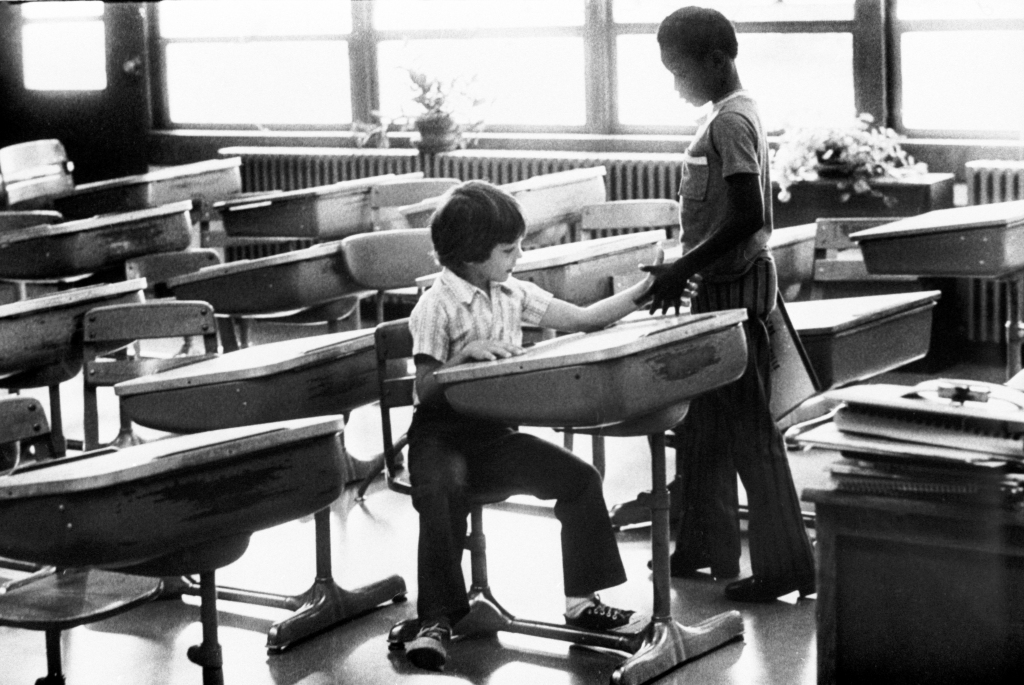
Members of Louisville’s Bingham family, which owned the newspaper from 1918 to 1986, have made a separate donation to support the collection, including preserving it, preparing it for use by the public, and developing programming to enable the public to engage with it.
Their combined generosity is creating the Barry Bingham Jr. Courier-Journal Photo Collection, a unique journalistic collection of local, state and national importance.
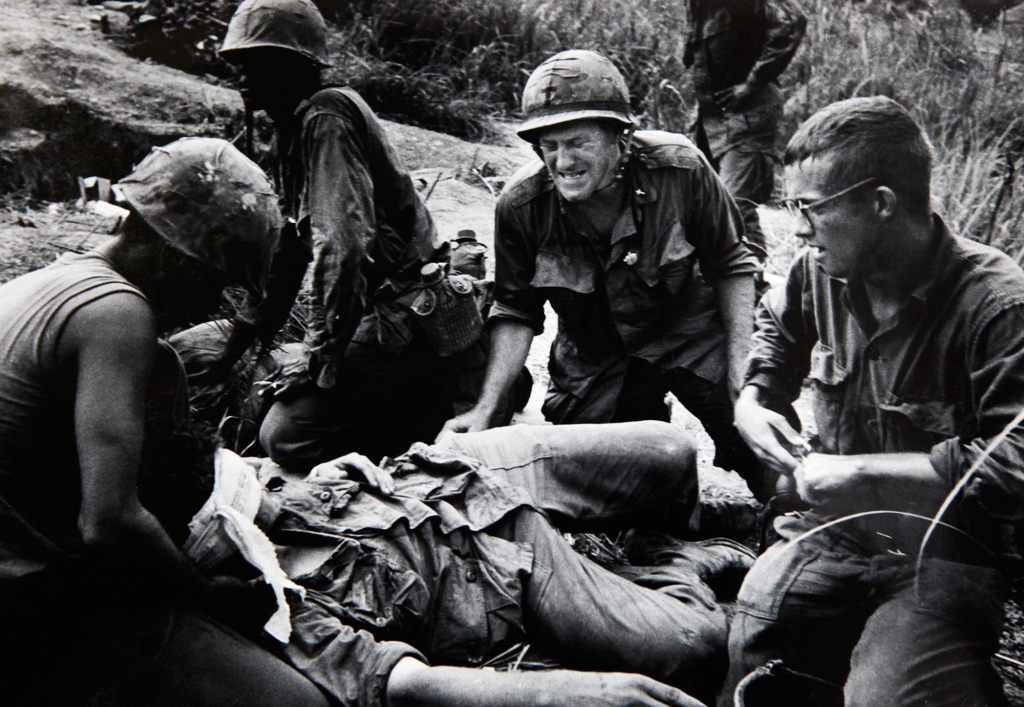
“We are incredibly grateful to the Courier Journal, Gannett, Emily Bingham, Molly Bingham and the rest of the Bingham family for making this historic gift possible,” UofL President Lori Gonzalez said. “Generations of readers saw these photos in their daily newspaper each morning, and now, future generations will continue to be able to study and appreciate the insight they provide into the history of our city, state, nation and world.”
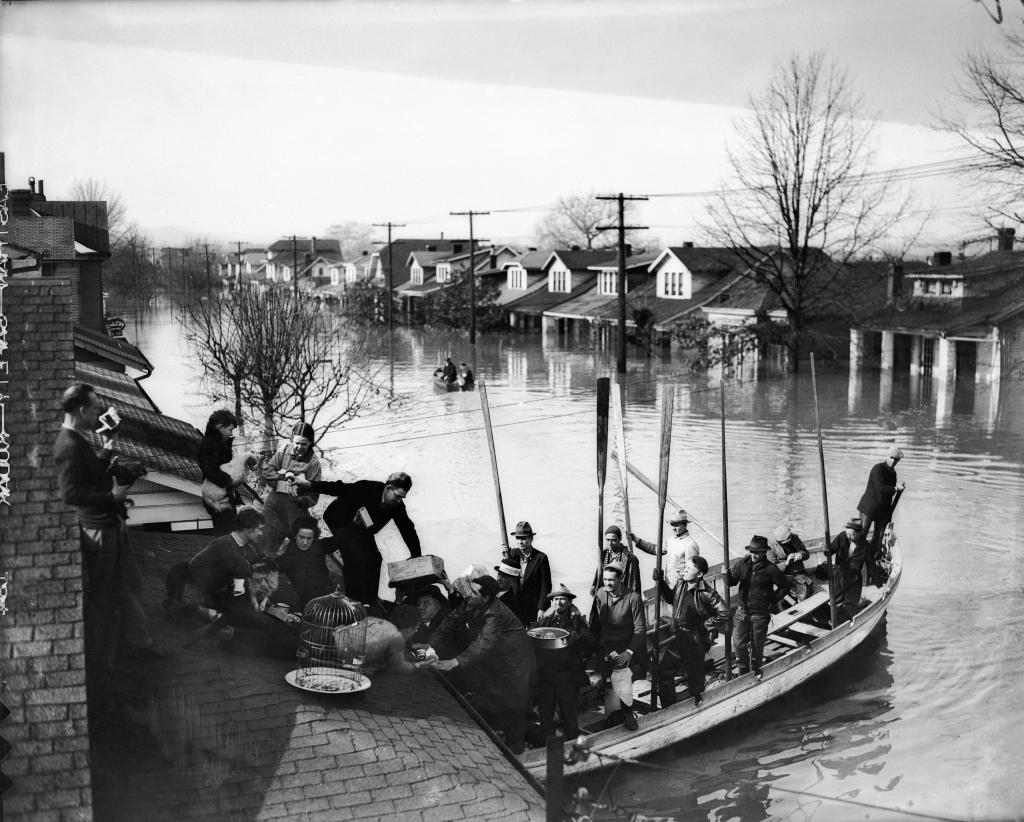
“This gift will allow the Courier Journal to retain the legacy of our work through this collection of historic photographs,” said Courier Journal Editor Mary Irby-Jones. “It is important for us to preserve and share our work with others so our community can learn about the history of Louisville as captured through our photographers in the field for more than 150 years. The Courier Journal is honored to entrust this priceless archive to the care of the University of Louisville for the purpose of making the collection available to the community for research and scholarship.”
“For most of a decade, it has been our dream to honor our father by finding a permanent, public home for the Courier Journal’s photographic collection,” said Emily and Molly Bingham. “This visual treasure is a testament to his dedication to high quality journalism, his passion for photography, his love of archives and his commitment to public access to information. He is up there somewhere today, smiling and joyfully twirling his trademark handlebar mustache.”
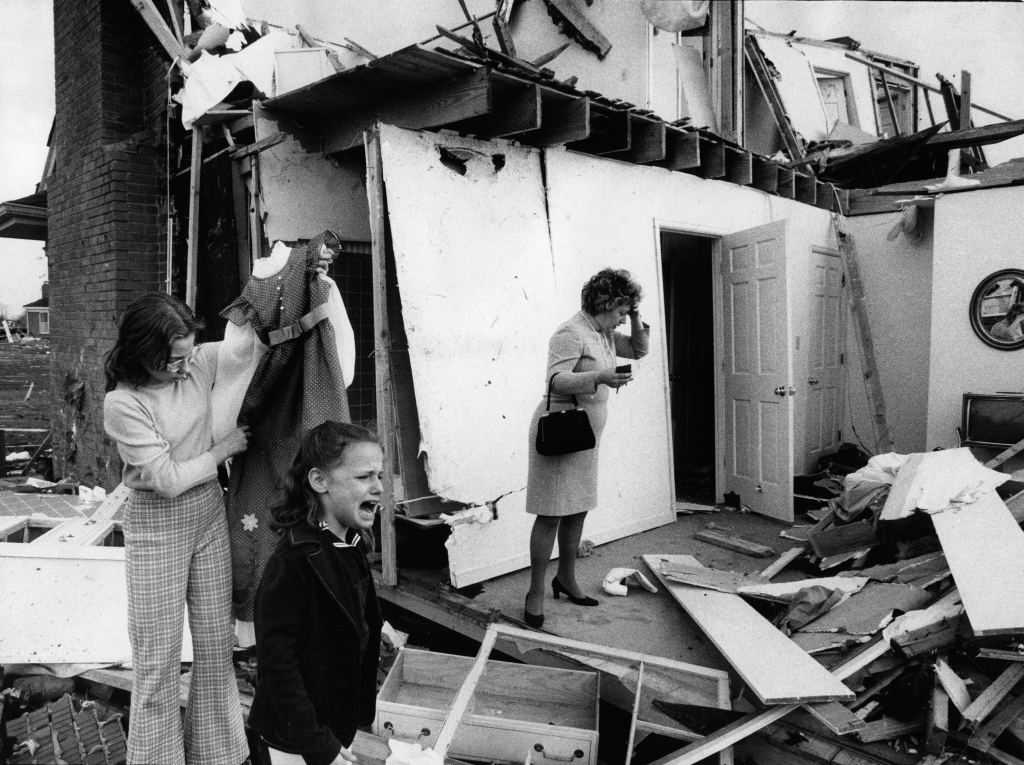
About the Barry Bingham Jr. Courier-Journal Photo Collection
The collection, consisting of images created by the photo department that served both the Courier Journal and the afternoon Louisville Times newspapers, chronicles daily happenings and major events from approximately the mid-1930s to the early 2000s when digital photography began to replace the use of film to capture images. The collection doubles the size of UofL’s photo holdings. It might have dated back further, but the Great Flood of 1937 destroyed much of the newspaper’s photo and negative library.
“The collection chronicles the civil rights movement, World War II, the Kentucky Derby through the years, presidential visits, changes in the built environment, and numerous public appearances and behind-the-scenes images of world leaders and celebrities,” said Archives and Special Collections Director Carrie Daniels. “Basically, all of the changes happening within our country were captured in these photographs.”
“It’s an incredible collection,” Elizabeth Reilly, photo archivist, said, “and with any large-scale acquisition like this, it will take years to process, organize and add information to the collection, to make images discoverable and usable by the public.
“A small portion of the collection will be available online in the near future, and, as we process the amazing imagery it contains, we will be opening up bigger and bigger parts of the collection to the public, making it accessible to everyone who wants to see it.”
Reilly credited Barry Bingham Jr., the third and last Bingham family member to serve as the paper’s publisher, for his devotion to setting high standards for the photography his newspaper published. The Courier Journal won two Pulitzer Prizes for photojournalism during his tenure.
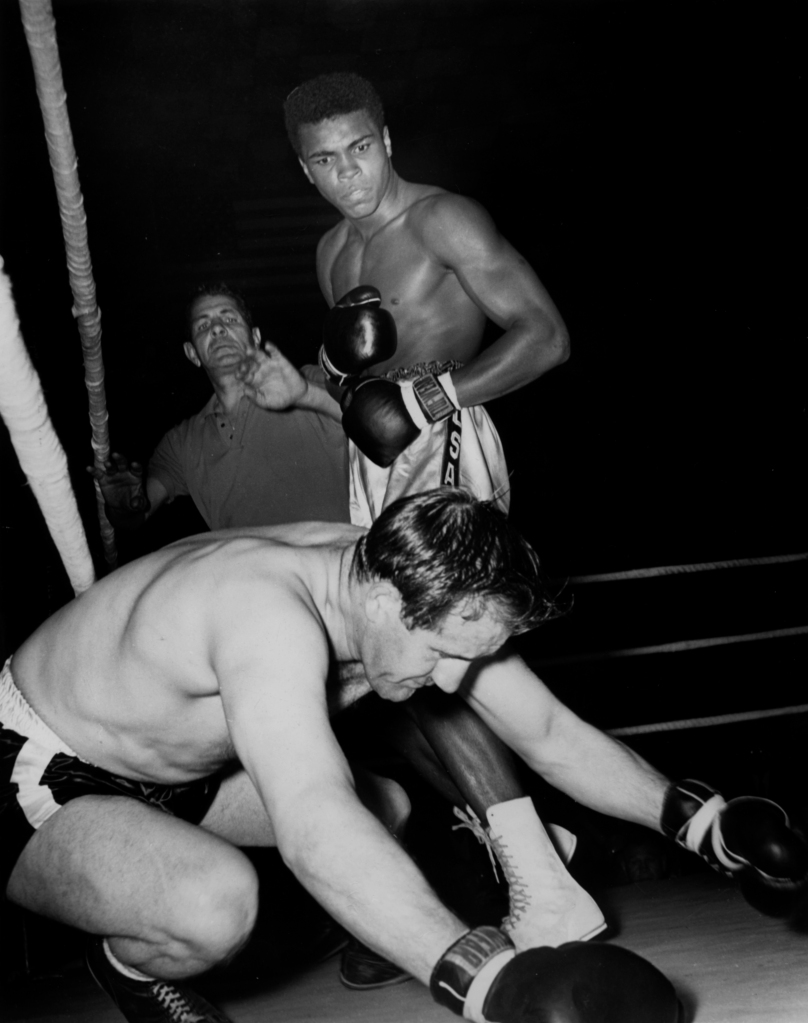
“He was a huge supporter of high-quality photojournalism,” Reilly said. “He grew and improved the quality of photography in the newspaper through investments, hiring talented photojournalists, and giving them time and travel budget to capture visual information beyond the news moment or press release. That commitment to quality is reflected in the collection and adds to its national significance.”
Daniels cited the increase in scholarship and creative potential that the collection will bring to UofL. “Our Photographic Archives already contain 2-3 million historical, documentary and fine art images dating from the 19th century to today that capture faces, buildings, landscapes and events from around the world, with a focus on Louisville and Kentucky. These images have appeared in scholarly or artistic work, including filmmaker Ken Burns’s documentaries, Dustbowl, Prohibition and Baseball. This dramatically increases our ability to provide images that everyone, including scholars and artists, will be able to use going forward, and we are very excited about that.”
The Barry Bingham Jr. Courier-JournalPhoto Collection Endowment is seeking additional contributions to support the organization, digitization, library services and public programming for this remarkable resource.
To make a contribution or for more information, contact Denise Bohn, denise.bohn@louisville.edu.
University Libraries Staff Honored for Longevity and Service
Posted: August 22, 2022 Filed under: Art Library, Ekstrom Library, Librarianship / Archivy, People, University of Louisville, University of Louisville Libraries Leave a commentThree long-time University Libraries staff members were honored recently with the Staff Service Recognition Award for their long history of employment and service at UofL. At a reception on July 19, President Lori Gonzalez and Brian Buford, Head of the Employee Success Center, presented awards to Kathy Moore, Circulation Manager at the Bridwell Art Library (45 years); Andy Clark, Ekstrom Library Facilities Coordinator (15 years); and Anthony Iles, Technology Specialist with Kornhauser Health Sciences Library (15 years).
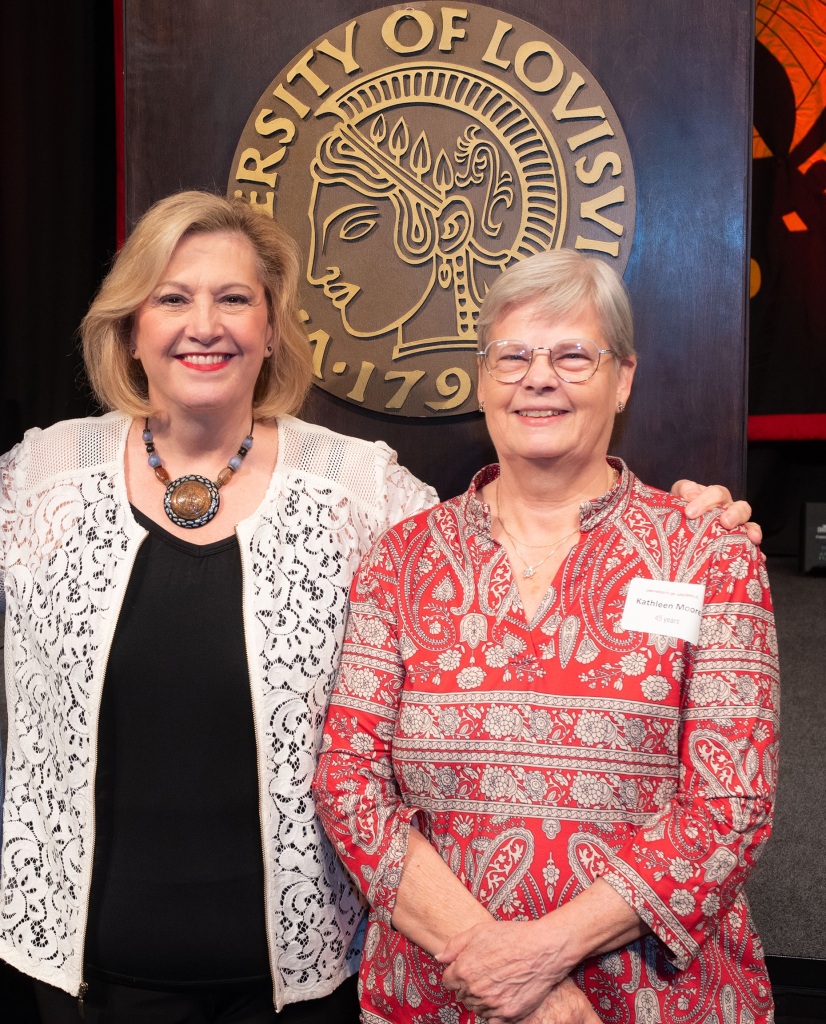
Kathy Moore began her career with the Art Library in 1975 as an undergraduate at UofL, working as a student assistant while earning her Bachelor of Science in Biology major. When a staff position opened with the Art Library, she jumped at it and never looked back. She remembers using the card catalog and “our oh-so-futuristic IBM Selectric II Correcting typewriter with changeable font balls.”
As one of only three staff employees who have worked for 45 years honored at the event, Moore was invited to speak to all attendees.
A 1988 UofL alum, Andy Clark worked with UPS before coming to Ekstrom Library as a Facilities Coordinator in 2007. Clark said Ekstrom was his favorite place on campus during this student days, but thought the building – built in 1981 – seemed old and dated. He has been glad to see the improvements and renovations in the library over the past 15 years.
Anthony Iles has worked as a Technology Specialist at Kornhauser for two years, formerly working as an Inter Library Loan Assistant, Library Assistant and Clinical Research Assistant. Prior to joining Kornhauser, he briefly worked for Humana Corporation.
Kornhauser Library “provides a unique service to the medical community,” Iles said, “whether face to face and/or virtual, which allows us to help those doing research get information they need. The reason I have stayed at Kornhauser Library is because I enjoy the work that I do and the people I work with. We are a great ‘work family.’”
The reception was hosted by the Employee Success Center to honor all employees who have worked at least 10 years for UofL.
Archives & Special Collections celebrates Julius Friedman with Exhibit and Gallery Dedication
Posted: July 7, 2022 Filed under: Archives & Special Collections, Art Library, Collections, Digital Collections, Ekstrom Library, Exhibits, Images, Kentucky, Louisville, Louisville History, New Items, People, Photographic Archives, Photographs, Primary Sources, University of Louisville, University of Louisville Libraries | Tags: art, artist, Julius Friedman, Louisville History Leave a commentEarly posters and other works by internationally renowned Louisville artist Julius Friedman are featured in the exhibit Graphic Pioneer: The Early Poster Designs of Julius Friedman, 1965-1980, hosted by Photographic Archives, part of UofL’s Archives and Special Collections (ASC). The exhibit opened with a reception on July 14 featuring the dedication and renaming of the Photographic Archives gallery in Friedman’s honor.
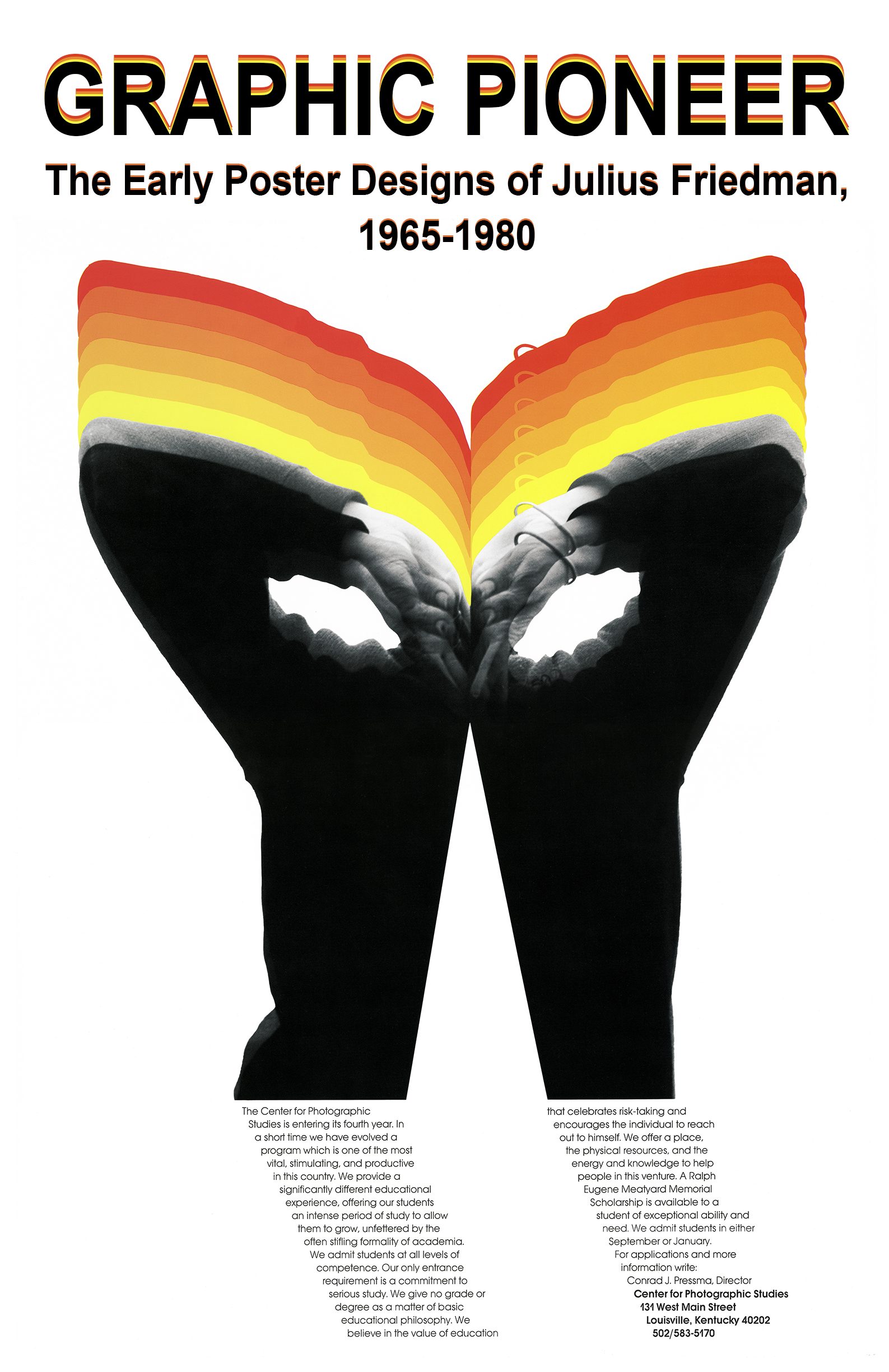
Friedman’s sister, Carol Abrams, donated the bulk of his artistic works to the Photographic Archives after his passing in 2017. Ms. Abrams states, “Julius loved to mentor students and fellow artists. In giving his work to the Archives and Special Collections, students can learn from his work.” Ms. Abrams also generously provided support to renovate the gallery, enhance storage for ASC’s photographic holdings, including Friedman’s work, and prepare the collection for research by the community. This preparatory work is ongoing, but the full collection is expected to be open to the public in 2023.
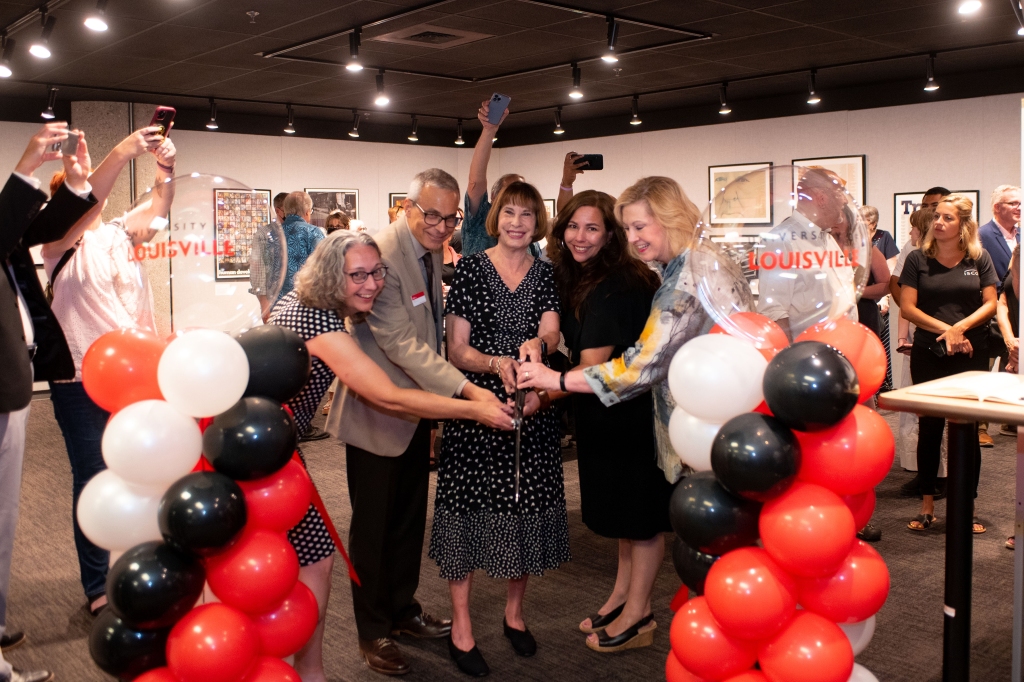
Beloved by the local arts community, Friedman was also highly regarded among international audiences. Perhaps best known for the posters “Fresh Paint” and “Toe on Egg,” Friedman created posters and other graphic works for a broad range of clients. Outside of his design work, Friedman created his own artwork through photography – often printing on unique surfaces like metals and fabrics – as well as sculpture, furniture design, collage, book art, and collaborative video. While this exhibit focuses on his early posters, the collection includes this broad range of media and formats.
“Julius Friedman was such a significant figure in our local arts scene,” said Carrie Daniels, Director of ASC. “We are delighted to serve as the home of his archive, and to present a slice of it to the community in this exhibition.”
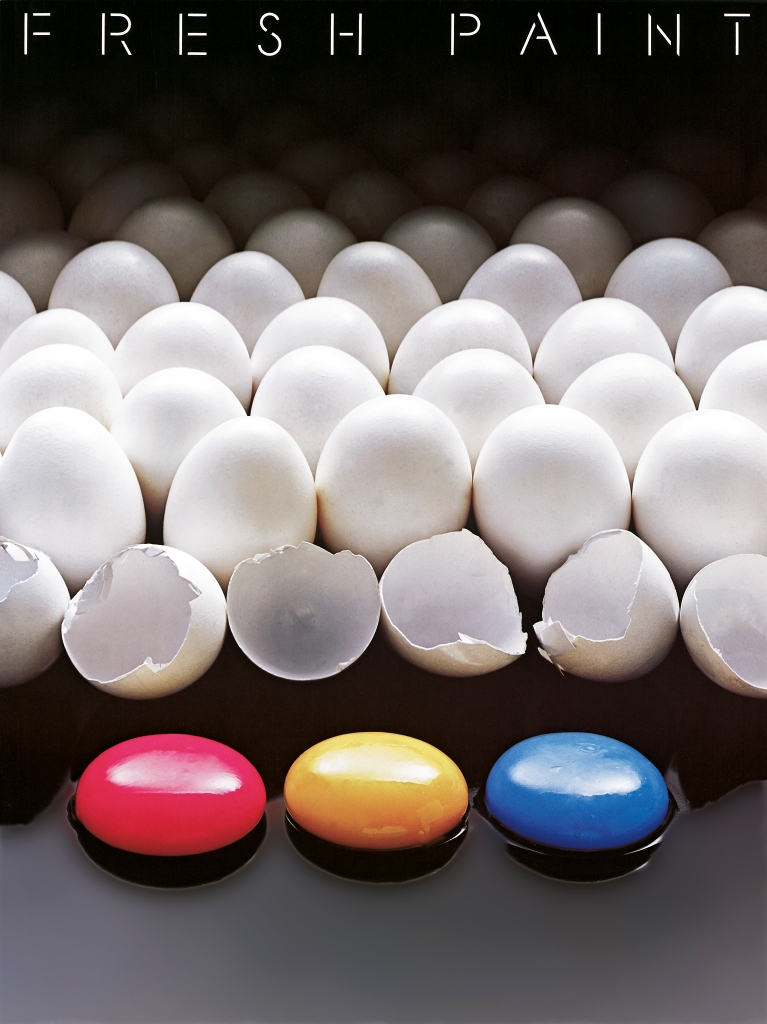
Friedman was a graphic design alumnus of UofL and had a decades-long relationship with the University Libraries. His work frequently appeared in ASC exhibits, including a 2012 celebration of Photographic Archives’ 50th Anniversary, which featured Friedman’s photographic capture of a ballerina in mid-swirl. Friedman’s close friend, former Art Library Director Gail Gilbert, inspired one of Friedman’s later efforts, a project titled The Book. Gilbert suggested that Friedman create works of art from old books that otherwise would have been thrown away, and he ran with the project, taking old books, tearing them, twisting them, boring into them, reconstituting them and creating art. The Book consists of 130 photographs of that art.
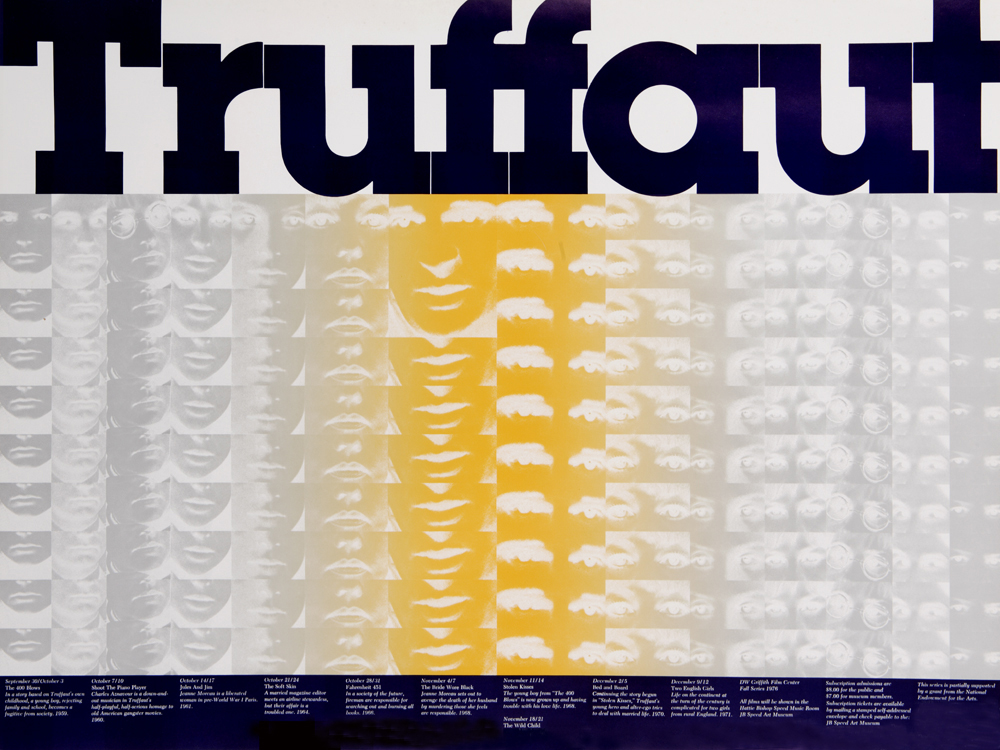
Among ASC’s Oral History Center (ohc.library.louisville.edu) digital offerings are two recordings of conversations between Abrams and ASC archivist and local historian Tom Owen. In them, Abrams discusses her memories of growing up with Julius, her older brother and only sibling, and how she came to work alongside him in his studio and then gallery to exhibit and sell his work commercially. Abrams recounts observing her brother’s talent burgeoning in childhood and watching him become successful as an adult. She also talks about establishing a nonprofit foundation in her brother’s name to help young people pursue academic degrees in the arts, the Julius Friedman Foundation (juliusfriedman.org).
The exhibition will run through December 16 in the Julius Friedman Gallery, on the lower level of Ekstrom Library. For more information, contact Elizabeth Reilly (502 852-8730; elizabeth.reilly@louisville.edu).
Marcia Hite Exhibit Showcases Patron and Artist
Posted: May 24, 2022 Filed under: Art Library, Collections, Louisville, Louisville History, People, Primary Sources, University of Louisville, University of Louisville Libraries Leave a commentBy Trish Blair
Have you ever thought about the names of the buildings and spaces while you were walking around downtown, your own neighborhood, or even the University of Louisville? The names of buildings, streets, and organizations are usually derived from either a person, place, or thing. The Hite Institute for Art and Design is named for Allen Rose Hite (1865-1941) whose generous bequest of nearly $1,000,000, 75 years ago elevated the Art department to a nationally known art program. But why did a businessman and attorney (UofL 1885) grant such a substantial sum of money to creating a space for students to learn the visual arts? Because his wife, Marcia S. Hite, was an artist and convinced him that the arts and art education was a valuable gift to the people of Louisville.

Marcia Shallcross Warren (1877-1946) was born in Louisville to a prominent family of steamboat captains and society dames. She entered a world of debutantes, formal dances, and ladies who lunch. After her debut, she met Allen R. Hite and they were married in 1897. They settled in a grand house on Third Street and began their life of civic duty and patronage. When the first World War broke out in Europe, Allen was too old for conscription, so he and Marcia volunteered at Camp Taylor. Marcia became a local hero by de-facto leading the Red Cross mission at Camp Taylor, raising $250,000 ($4.6 million in 2022 dollars) in 1918, for the Red Cross.
As part of the 75th anniversary of the Hite Institute of Art and Design, the Art Library will host an exhibit honoring Marcia Shallcross Hite, who along with her husband Allen R. Hite, made the bequest that funded the creation of the Hite Institute. During her lifetime, Hite exhibited her watercolors in New York and Boston alongside artists such as Edward Hopper and John Carroll. The exhibit is based on artifacts from the Allen R. and Marcia S. Hite papers in the Art Library’s manuscript collection and features some of Marcia Hite’s original works from the University of Louisville art collection. The exhibit will be on display throughout 2022.
When the war was over and they re-settled into married life, Marcia began taking art classes at the newly formed Louisville Handicraft Guild. She became president of that group’s next incarnation, the Louisville Art Center. During this time, Marcia discovered that she could paint and draw despite no formal training. In 1930, after painting watercolors for two years, she began exhibiting in New York and Boston, along such artists as Edward Hopper, as well as in Louisville. She became known as ‘Louisville’s Memory Painter.’
In 1941, she became a widow when her beloved husband Allen died at the age of seventy-six. However, before his death Marcia, had transformed Allen into an art lover and a philanthropist. When Allen wrote his first will, he made a codicil that they would bequest the bulk of their estate to the University of Louisville to create an art institute. In 1946, after Marcia passed, the Allen R. Hite Institute of Art was founded. At the time their gift was the largest in UofL history.
While the name has evolved over the last 75 years, the mission is still as they envisioned:
“For the furtherance of Modern art in general and education by teaching, lecture and scholarship.”
Without Marcia Shallcross Warren Hite the visual arts would be very different at UofL today.
Awards Honor University Libraries Employees
Posted: April 18, 2022 Filed under: Archives & Special Collections, Art Library, Ekstrom Library, Kentucky, Kornhauser Health Sciences Library, Law Library, Librarianship / Archivy, Louisville, Music Library, People, University Archives & Records Center, University of Louisville, University of Louisville Libraries | Tags: awards, libraries employees Leave a commentThree University Libraries employees have been honored with awards for outstanding performance and merit, and for contributions to the Louisville community.
John Burton, Acquisitions Specialist with Technical Services won the University of Louisville’s annual Outstanding Performance Award honoring exceptional service in staff. Burton has worked for the Libraries for over 30 years, having begun as a libraries student assistant, and later with Technical Services, and has experienced first-hand the transformation of the library profession and its services, including the transition from an analog card catalog to digitized online collections. As Acquisitions Specialist, Burton is in charge of finding and evaluating items to add to the Libraries’ physical and digital collections.
The award comes with a cash award of $1,000, an acrylic plaque, and public mention on the University website and UofL Today.
Fannie Cox, Outreach and Reference Librarian, has been chosen for the University of Louisville Distinguished Faculty Award, which recognizes “the excellent service of the University of Louisville faculty and the significant impact that service has on the university and beyond.” The awards are given annually to faculty for exceptional service in five categories: service to UofL; service to the profession; service to the community, the commonwealth and/or the region; national/international service; career of service.
As community outreach and reference librarian, Cox has forged relationships with numerous organizations and individuals working to help under-served communities in Louisville, particularly in the West End. She leads the Outreach Program within the Libraries, which offers instructional support to community members, helping them develop informational literacy and critical thinking skills. She has been with the Libraries for 22 years.
Cox and Burton were honored at the 2022 Faculty and Staff Excellence Awards Reception on Monday, April 18 in the Student Activities Center ballroom.
Additionally, Weiling Liu, Head of Office of Libraries Technology, was one of five individuals selected to receive the Jewish Family and Career Services’ MOSAIC (Multicultural Opportunities for Success and Achievement In our Community) Award. The MOSAIC Awards “honor immigrants and refugees from around the globe who have made significant contributions in their professions to the Louisville community.” The 2022 nominations were open to individuals who, “regardless of race, ethnicity, religion, gender, or country of origin, have fulfilled their dreams of self-sufficiency and made an impact in our community” according to Liu’s award letter.
Liu has worked with the Libraries for 23 years. As the Head of OLT, she manages and directs a department responsible for all aspects of library technology systems and libraries technical support. In her history with the University Libraries, she oversaw the migration of the library catalog system and the implementation of Ekstrom Library’s noted Robot Retrieval System. She has been a member of state, national and international library professional associations. In addition, she is a life member of the Chinese American Librarians Association (CALA), a non-profit international organization of librarians. Professor Liu also serves on the Association of Chinese Americans in Kentuckiana (ACAK) board and was president from 2018-2021.
The MOSAIC award ceremony and dinner will take place on Thursday, May 26, 2022 at the Muhammad Ali Center in downtown Louisville. In addition to Liu, this year’s award winners are Dr. Faten Abdullah, Jose Neil Donis, Dr. Juan Gustavo Polo, and Frank Schwartz.
Louisville history of racial oppression and activism revealed in new online resource
Posted: March 7, 2022 Filed under: Archives & Special Collections, Art Library, Books, Collections, Databases, Digital Collections, Digital Scholarship, Ekstrom Library, Images, Kentucky, Kornhauser Health Sciences Library, Louisville, Louisville History, Photographs, Primary Sources, University of Louisville Libraries | Tags: archives, information literacy, Photographic Archives, racial justice, research 2 CommentsBy Rebecca Pattillo
University of Louisville’s Archives and Special Collections (ASC) has published a new resource, Uncovering Racial Logics: Louisville’s History of Racial Oppression and Activism, a website that provides access to documents, oral histories, photographs and other materials that tell the story of Louisville’s history of racial oppression and activism.
The site is focused on education, policing and housing, “areas in which we see institutional racism at work, producing unequal access to resources, freedoms, and opportunities as part of ongoing U.S. racial stratification,” according to the site’s introduction. Funded by the Cooperative Consortium for Transdisciplinary Social Justice Research (CCTSJR) and the Anne Braden Institute for Social Justice Research, the collaborative project was created by faculty members across multiple departments for an interdisciplinary look at the “racial logics” of Louisville via primary source materials housed in ASC.
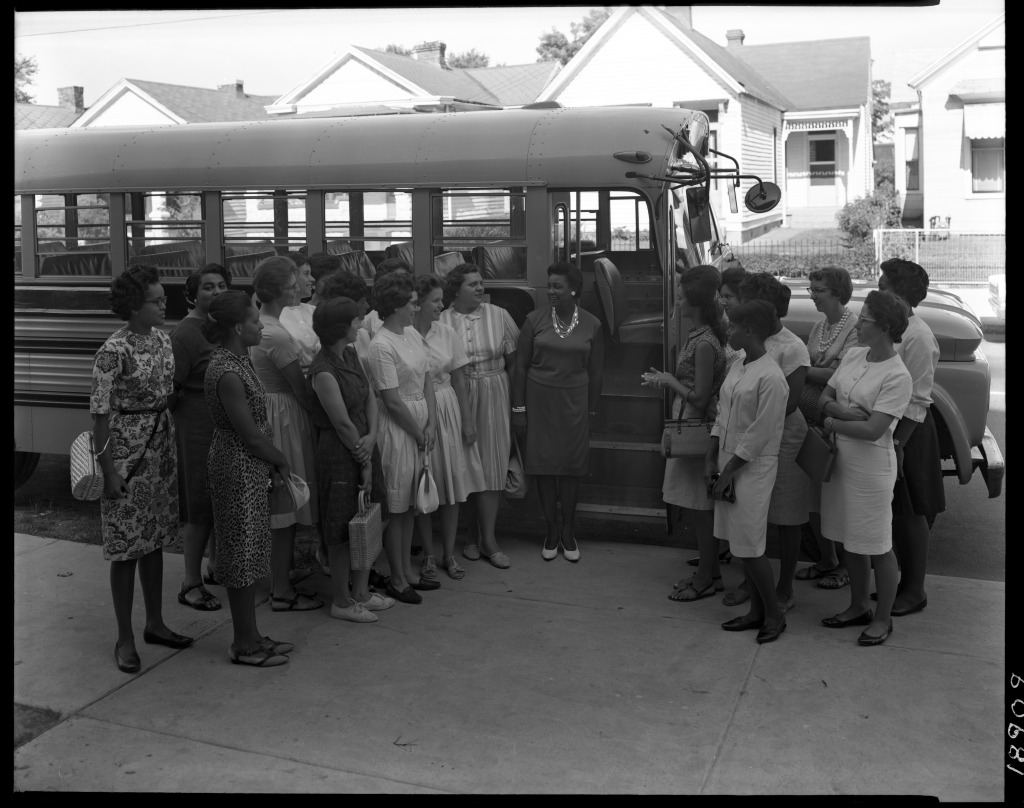
Dr. Carrie Mott, UofL Assistant Professor of Geographic and Environmental Sciences and one of the site’s creators, said the goal of the project was to provide access to useful information to anyone interested in learning about Louisville’s history around racial justice.
“We also wanted to provide a tool that would help people see the amazing archival resources housed at ASC,” said Mott. “From prior research and teaching with archives at UofL, I knew of the wealth of resources we have here at UofL. But we recognized many people on campus as well as in the larger Louisville community do not understand how to use archival resources, why they might be useful, or know how to access them. The website was an opportunity to provide some resources in terms of actual scanned documents, but also to help people learn that UofL has a lot more where that came from for research on Louisville’s racial history.”
Rebecca Pattillo, ASC Metadata Librarian and site co-creator, said “Working on this project allowed ASC to make some of our materials available digitally. The site also directs visitors to our robust online digital collections, where they can explore some of the materials referenced in greater depth.”
“One misconception about the archives is that they are only available to UofL affiliated people, when actually we are open to anyone in the community,” said Pattillo.
The site features scanned archival documents including pamphlets, newspaper clippings, oral histories, correspondence, and photographs, with contextual and historical information about each document and the larger collection to which it belongs. In addition to scanned documents, the site also highlights oral histories, story maps, and other resources addressing Louisville’s racial history.
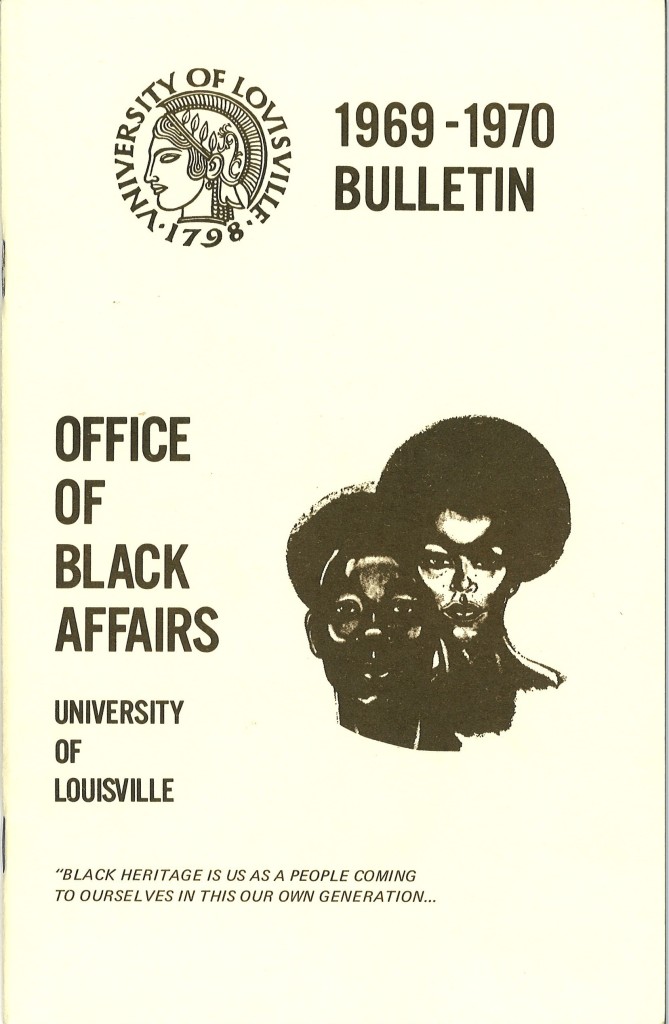
Site users may explore the topic of both secondary and higher education in Louisville to learn about the push for equal pay among Black and white teachers in the late 1930s and early 1940s, the city’s move to desegregate schools via court-ordered busing in the mid-1970s, integration of the University of Louisville in the 1950s, and the founding of the Black Student Union and the Department of Black Affairs in the late 1960s. In addition, learn about Simmons University, one of Kentucky’s two HBCUs (Historically Black Colleges and Universities), and Louisville Municipal College, the only Black liberal arts college in the state which operated from 1931 through 1951, when it merged with a newly integrated UofL.
Another topic explored is the history of policing and police violence throughout the city. An example is the story of Fred J. Harris, a Black man who lost an eye after being beaten by police in 1979, and the work of the Kentucky Alliance Against Racist and Political Repression to seek justice for Harris by demanding accountability from the police force.
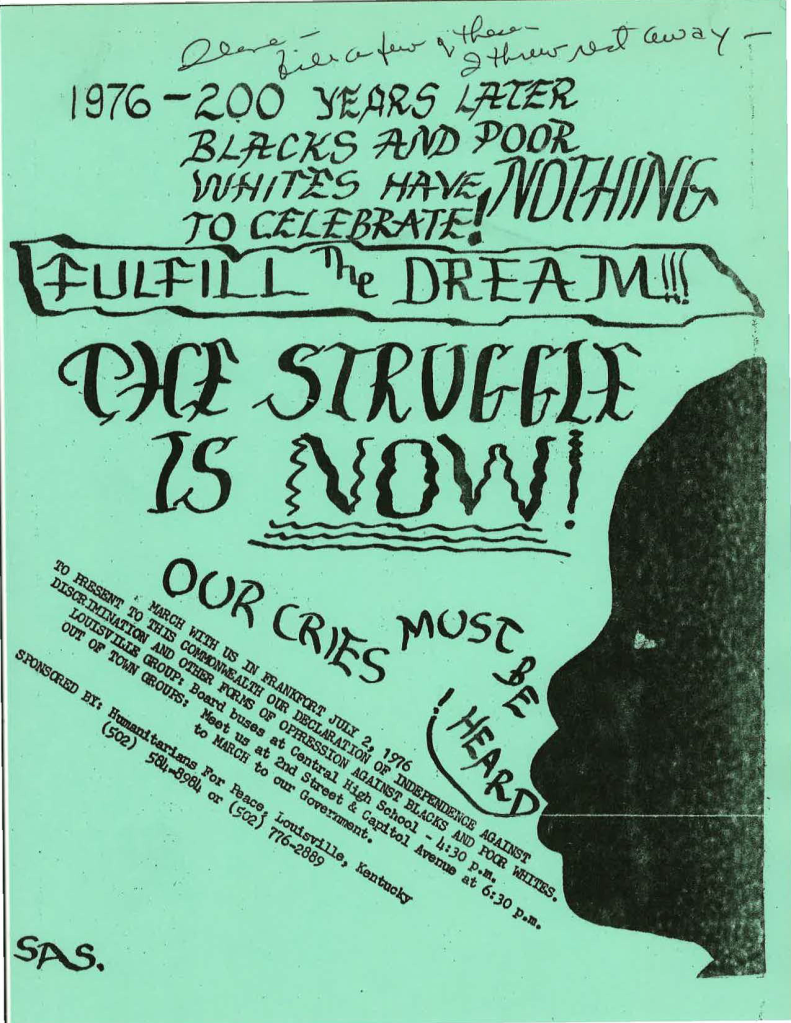
Housing and Urban Renewal is another focus of the Uncovering Racial Logics project. Select archival materials highlight the narrative of Louisville’s history of racist housing policies and practices, including the construction of racially segregated federal public housing projects in the aftermath of the destruction of neighborhoods and displacement of communities via Urban Renewal. These materials also reveal resistance to and organizing among the Black community and white allies to fight against racist housing policies and discriminatory practices. One such well known housing project is Beecher Terrace, which is explored via the papers of its long-time manager, Earl Pruitt.
Rounding out the project is an extensive, albeit not exhaustive, list of resources for further research. You can explore interactive maps that detail the history of racism within city planning and zoning, as well as redlining within Louisville. In addition is a list of community resources that highlight local organizations that work to empower and improve life for Louisville’s diverse citizens. Also included is a list of UofL Resourcesthathighlights on-campus organizations and committees that work towards racial and social justice, as well as minority affinity groups.
This project was created by Carrie Mott, Rebecca Pattillo, Melanie Gast, Anna Browne Rebiero, Joy Hart, Kelly Kinahan, and Catherine Fosl, with additional assistance from undergraduate and graduate research assistants Cat Alexander, Elizabeth Frazier, and Ben Harlan. Additional technical assistance was provided by Cassidy Meurer and Terri Holtze. Special thanks goes to UofL’s Cooperative Consortium for Transdisciplinary Social Justice Research (CCTSJR) and Anne Braden Institute for Social Justice Research (ABI) for funding and supporting this work, as well as our community partners.
Archives and Special Collections collects, organizes, preserves, and makes available for research rare and unique primary and secondary source material, particularly relating to the history and cultural heritage of Louisville, Kentucky and the surrounding region, as well as serving as the official memory of the University of Louisville.



